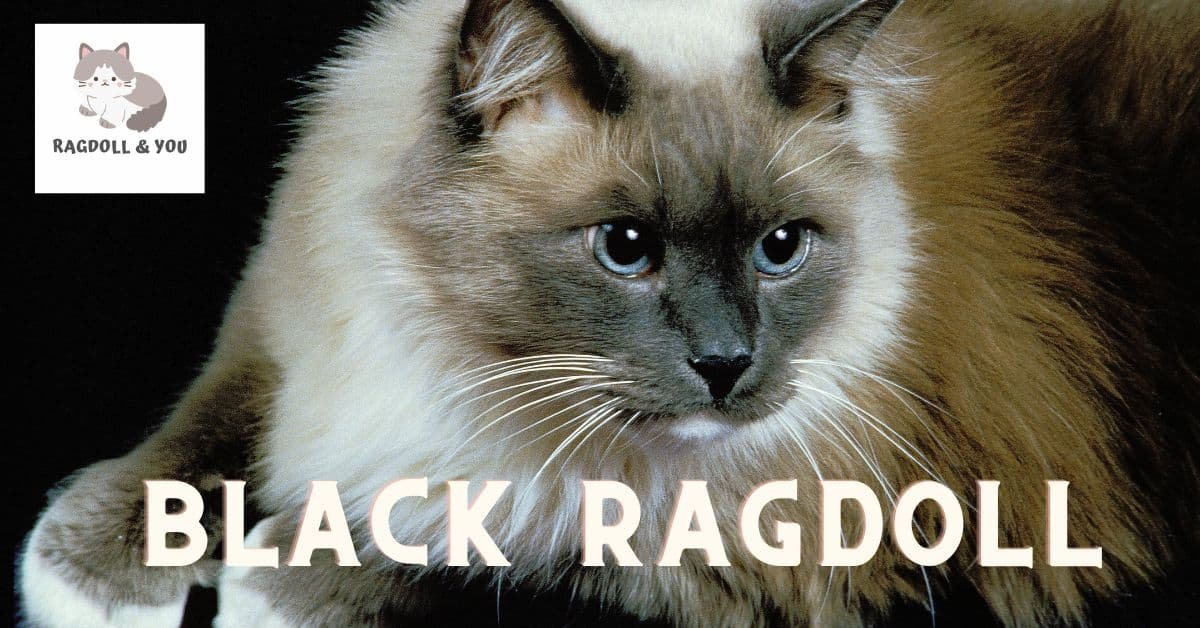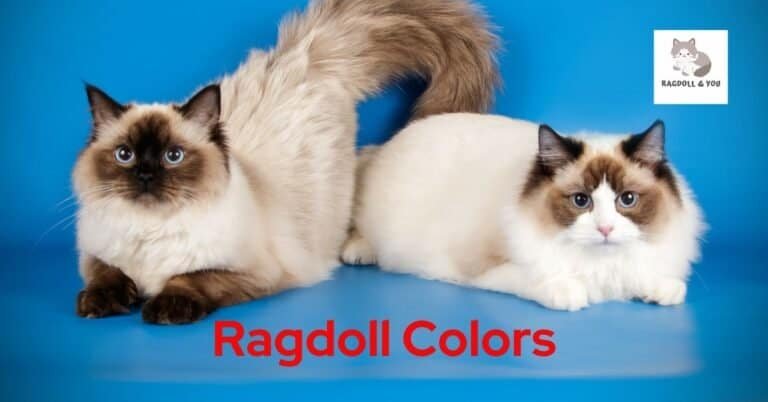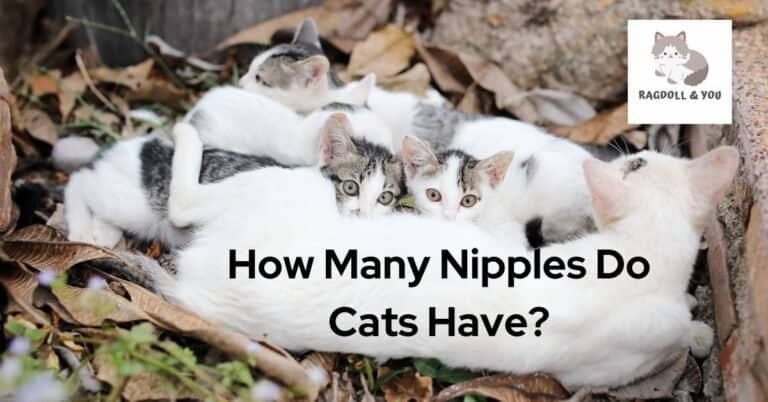Mysterious Black Ragdoll Cat Breed Temperament & Ragdoll Community
The black ragdoll cat is a breed renowned for its gentle, affectionate disposition. These cats are prized for their large size and soft, silky coats. True black ragdoll fur is dense and smooth in texture. Coat colors can also include chocolate, blue, and lilac. Ragdolls require minimal grooming – a few quick brushes per week prevent matting. They are relatively inactive and do not need much exercise.
Those considering a black ragdoll should research the breed thoroughly first. Ragdolls are expensive initially but the investment pays off in delightful companionship. Their sweet, placid temperaments make them ideal pets for all age groups and cat lovers. For the right owner, these personable cats prove a most rewarding choice.
Why Are Black Ragdolls Controversial?
Black Rag doll cats generate significant controversy as they defy the typical breed standards. Most associate Ragdolls with striking blue eyes and traditional ragdoll points. However, black Ragdolls lack these defining features.
Major cat fancier organizations like The Cat Fanciers Association reject black Ragdolls as true breed members. They maintain Ragdolls must adhere to specific qualifications to be considered purebred.
This stance incites debate within cat circles. Devotees of black Ragdolls feel excluded by the rigid perspectives of pedigree cat clubs. Those groups staunchly defend the notion that Ragdolls must meet precise criteria to represent the breed legitimately.
The controversy highlights the tension between purebred ideology and inclusion. As experts, we must examine if long-held breed standards should evolve to accommodate wider variations. More dialogue and research is needed to resolve this complex issue fairly.
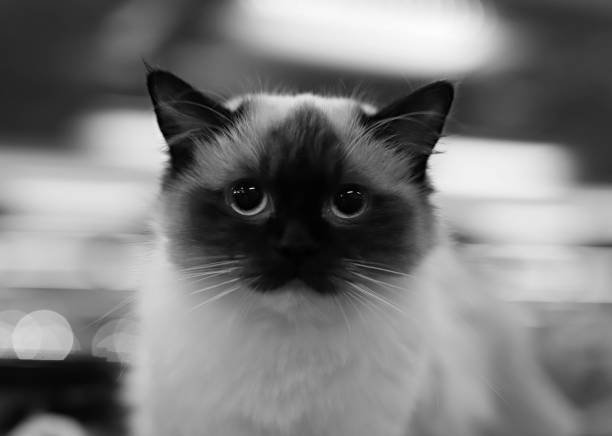
What You Need To Know Before Owning A Black Ragdoll Cat?
The black Ragdoll cat master check includes examining a few things. It includes their beautiful appearances, distinct colors and patterns, size and body shape, eye color, temperament, health issues, and lifespan.
Appearance and Physical Characteristics
The black Ragdoll is a large, muscular cat breed. Males weigh 15-20 pounds on average, while females are typically 10-15 pounds. They have a long, rectangular body shape with broad chests and shoulders. Their paws are large, round, and tufted. Black Ragdolls have semi-long, dense, silky coats.
Coat Colors and Patterns
As the name suggests, black Ragdolls exhibit a deep, coal-black coat color. It is smooth and gleaming with no other colors or markings. Some may have slight brownish tinges in sunlight. The fur is short on the face and longer on the ruff and tail.
Adult Size and Body Shape
These cats are one of the largest domestic breeds. They have a substantial body that is long and muscular. The chest is broad and shoulders heavy. Hind legs are slightly longer than forelegs.
Eye Color
Black Ragdolls have luminous golden or deep yellow eyes. Blue or odd eyes are disqualifying traits.
Ragdoll Temperament & Docile Personality
Black ragdoll cats aren’t aggressive. There’s no thing as a black ragdoll that is out of control. This best cat is known for its docile temperament and typical calm personality traits. They become extremely attached to their families and crave companionship. Intelligent and easy to train, they enjoy playing fetch and learning tricks.
Extremely laidback and gentle, black ragdolls tend to go limp in one’s arms and rarely exhibit aggressive scratching or biting even during play. Highly affectionate and cuddly, they form deep bonds with their families and thrive when given ample love and companionship.
Though adaptable, black ragdolls should not be left alone for long stretches. Intelligent and peaceful, they enjoy learning tricks and playing fetch in a calm environment. Black ragdolls communicate through expressive vocalizations and are often quite chatty.
While their sweet, trusting natures make them ideal pets, loud noises and quick movements can startle them given their relaxed dispositions. Proper socialization from kittenhood is essential to ensure black ragdolls become well-adjusted adults. .

Health Issues and Lifespan Of Official Ragdoll
Black Ragdolls are predisposed to hypertrophic cardiomyopathy and polycystic kidney disease. With proper care, their lifespan is 12-17 years. Annual vet checkups are recommended. Here are some potential health issues to be aware of with black ragdoll cats:
- Heart disease – Ragdolls are prone to hypertrophic cardiomyopathy (HCM), a thickening of the heart muscle. Reputable breeders will screen for HCM.
- Polycycstic kidney disease (PKD) – A genetic disease that causes cysts on the kidneys. Breeders should test parent cats.
- Bladder stones – Ragdolls may develop calcium oxalate stones in their bladder, especially males. Feed a urinary health diet.
- Dental disease – Ragdolls often have misaligned bites and are prone to gingivitis. Brush their teeth and get dental cleanings.
- Obesity – Ragdolls love food and can become overweight easily. Portion-control their diet else they can go limp.
- Allergies – Ragdolls can be prone to food allergies or seasonal environmental allergies. Keep note if they itch.
- Ear mites – Their plush coats can attract ear mites leading to infections. Check their ears regularly.
- Fur mats – Their long fur can mat easily if not brushed regularly. Maintain their coat.
- Respiratory issues – Ragdolls are susceptible to asthma, bronchitis, or sinus infections. Avoid smoke exposure.
Grooming and Care For Black Ragdoll Breed
Proper grooming is essential for keeping your black Ragdoll looking its best. Their long, silky coats are prone to tangles without diligent brushing and combing. Follow these expert grooming tips:
Regular Brushing
Brush thoroughly 2-3 times per week. Daily brushing is better during heavier shedding seasons. First use a slicker brush to remove loose hairs and distribute skin oils. Then use a steel comb to detangle, working from head to tail.
Check for mats or knots as you brush. Carefully cut out severe tangles with scissors. Avoid pulling on them as it can hurt the cat. Limit bathing as it can worsen matting.
Claw Care
Trim claws every 2-3 weeks. Use cat-safe clippers for a clean cut. Only cut the clear portion, avoiding the pink quick. Reward with treats during trims to create positive associations.
Ear Cleaning
Inspect ears weekly and clean gently as needed with a vet-approved solution and cotton ball. Watch for redness, odor, and discharge. See your vet if issues arise.
Dental Hygiene
Support dental health by brushing teeth daily with a soft cat toothbrush and veterinary toothpaste. Work slowly and reward cooperation. Have your vet demonstrate proper technique.
Bathing
Only bathe a black Ragdoll every 2-3 months or as needed. Use cat shampoo and avoid getting water in the ears. Rinse thoroughly. Blow dry on low heat to avoid chilling.
Professional Care
Schedule professional grooming every 6-8 weeks. They can properly bathe, brush, trim nails, and address problems like severe matting.
With proper at-home grooming and professional care, your Ragdoll’s coat will stay soft, shiny, and mat-free. Consistent grooming also allows bonding time with your cat.
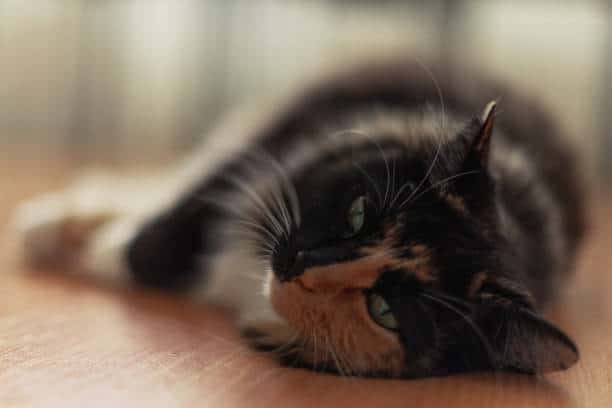
Black Ragdoll’s Diet and Nutrition
Selecting the Right Food for Solid Black Ragdoll
As an expert Ragdoll owner, I recommend feeding a high-quality dry cat food formulated specifically for the nutritional needs of kittens, adults, or seniors. Look for brands with meat (such as chicken or fish) as the first ingredient. Avoid fillers like corn, wheat, and soy. Ragdolls need higher protein levels around 30-40%.
Wet food can be given occasionally but isn’t necessary for this breed. Consult your veterinarian before switching foods or feeding any homemade diet to ensure complete nutrition.
Feeding Amounts and Schedule For Black Cat
The amount of food depends on your Ragdoll cat’s age, size, and activity level. Follow package instructions based on your cat’s weight and life stage. I feed my adult Ragdoll 1/4 cup dry food twice daily.
Kittens under 4 months may need 3-4 small meals per day. Keep food bowls in consistent locations and stick to a regular feeding schedule. Cats thrive on routine.
Dietary Supplements
Talk to your vet before giving any supplements. Some extras that may benefit Ragdolls are glucosamine/chondroitin for joint health, probiotics for digestion, and omega fatty acids for skin and coat. Always introduce supplements gradually.
Hydration is Key
Provide fresh, clean water at all times. Change water daily. Use ceramic or stainless steel bowls, as plastic can harbor bacteria. Consider adding a pet drinking fountain, which encourages intake.
A moist food diet will provide extra fluids. You can also add a bit of low-sodium broth or warm water to dry kibble to increase moisture.
Dental Care
Support oral health by brushing your Ragdoll’s teeth daily using a cat-safe toothpaste. Provide chew toys and treats to help remove plaque. Get annual veterinary dental exams and cleanings.
Monitor Weight Of This Type Of Cat
Weigh your cat monthly and watch for weight gain or loss. Feel their ribs – they should be easily felt with a thin layer of padding. Limit treats and always measure food to avoid obesity. Consult your vet if concerned about your Ragdoll’s weight.
With an optimal diet tailored to your Ragdoll’s needs, your cat will live a long, healthy, and happy life. Partner with your veterinarian to make the best nutritional choices.
Interesting Facts For Ragdoll Owners About Black Color Ragdoll Cats:
- The genes responsible for the black coat color in Ragdolls were introduced through outcrossing with domestic long-haired black cats. This explains why they deviate from the pointed pattern seen in traditional Ragdoll lines.
- While most pedigreed cats have blue eyes, black Ragdolls usually have vivid amber, gold, or hazel eyes. This yellow eye color results from the dense pigment in their black fur.
- Black kittens that inherit the Ragdoll’s pointed gene from their parents will start out very dark, almost black. As they mature, their lighter body markings and blue eyes will become visible.
- The Cat Fanciers’ Association does not recognize solid black Ragdolls as part of the breed standard. However, other associations like TICA have accepted black Ragdolls into their pedigreed categories.
- Although rare, some black Ragdolls may exhibit a rusty tinge or tabby ghost markings in their coat when sunlight hits it. This uptake of color is known as “rusting.”
- While no official genetic studies have been done, many breeders believe non-pointed black Ragdolls exhibit extra large size and more docile temperaments than their pointed counterparts.
- Owing to their striking coats, black Ragdolls are often used in media portrayals of witches’ cats and other Halloween-associated felines.
- As kittens, black Ragdolls can be challenging to photograph clearly due to their dense, light-absorbing fur. Patience and the right lighting is key.
- The contrast of their glowing eyes against the black fur gives an owlish appearance. This may have contributed to myths about cats having supernatural night vision.
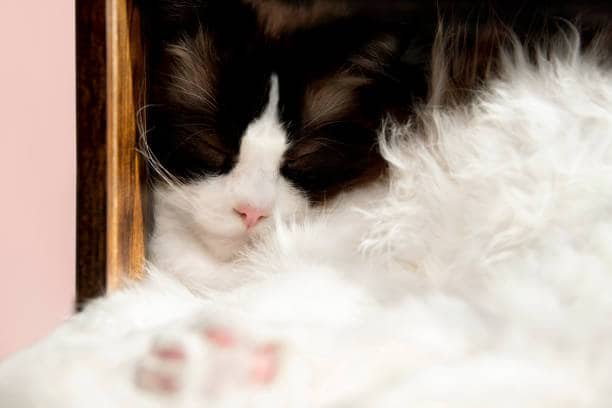
How To Bring Home A Black Ragdoll Kitten From A Breeder?
Here are a few tips for finding black ragdoll cat breeders:
- Search online for breeders of solid ragdolls in your area or region. Look for breeders who specifically mention black ragdolls in their breeding program. Reputable breeders will typically have websites showcasing their cats.
- Check with various cat associations for breeder referrals. Organizations like The International Cat Association or The Ragdoll Community can often provide recommendations for quality breeders.
- Attend a cat show. Ragdoll cat breeders often attend shows to exhibit their cats. You can meet breeders in person and ask questions about their black ragdoll kittens.
- Ask your veterinarian if they have any contacts for reputable ragdoll breeders. Vets sometimes have relationships with local breeders.
- When contacting breeders, ask questions about their breeding cats’ pedigrees, health/genetic testing, and how they socialize kittens. Reputable breeders will test for hypertrophic cardiomyopathy and PKD.
- Be prepared to get on a waitlist. Quality ragdoll kittens are in high demand, so you may have to wait several months for a black ragdoll kitten from a good breeder.
- Expect to pay $1,000 or more for a black ragdoll kitten from a responsible breeder. Avoid very cheap kittens, as they likely come from irresponsible sources.
Take your time researching breeders to find one who is ethical and responsible. A good breeder will become a valuable long-term resource as you enjoy your black ragdoll cat!
Black Ragdoll Colors And Types
Black Ragdolls come in various variants. A few are black points, black coat color, black smoke, solid black Ragdoll, and even black and white Ragdoll cat.
Solid Black Purebred Ragdoll
The iconic solid black Ragdoll has a dense, sleek, coal-colored coat lacking any markings. While considered non-standard, solid blacks are common. Upon close inspection, faint tabby ghost markings may be visible in certain lights. The degree of contrast with the yellow eyes is magnificent.
Black Mitted
The black mitted Ragdoll exhibits white fur on the chin, belly, and all four paws; otherwise, it appears black. The front mittens should be symmetrical in size and shape. The mitting contrasts elegantly against the jet-black body.
Black Bicolor
In bicolors, 30-50% of the fur is white. This includes the chin, chest, underside, and all four paws. Additionally, an inverted white “V” shape typically appears on the face. The remainder of the coat gleams inky black.
Black Lynx Point
Here the body is pale cream to fawn, providing dramatic contrast to the dense black points. Points include the face, ears, legs, tail, and feet. Kittens look almost solid black until their body fur grows in around 4 months old.
Black Tortie
The striking black tortie Ragdoll mixes luminous solid black fur with vibrant splashes of red on the face, chest, underside, and tail. Cream mottling may also be present. No two torties have identical patterns.
Black Smoke
In smoke Ragdolls, only the tip of each hair shaft is black, while the roots are white. This creates an elegant silvery sheen. The contrast between white undercoat and black tipping remains clearly defined.
With careful selection, one can adopt the ideal black Ragdoll variant. Examine parentage, pedigrees, and the kitten’s emerging patterns closely.
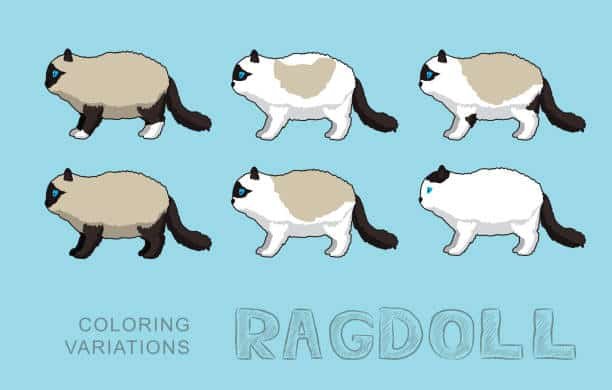
Is Black Ragdoll a Mix Breed Or Recognised As A Purebred Ragdoll?
No, the black Ragdoll is not considered a mixed breed cat. They are purebred Ragdolls that exhibit the non-standard solid black coat color.
The genes for black fur were introduced into Ragdoll breeding lines through outcrossing with solid black domestic longhairs many generations ago. So genetically, black Ragdolls do have longhair black cats in their ancestry.
However, these days, reputable Ragdoll breeders work hard through careful breeding to maintain the black coat trait within pedigreed bloodlines. Solid black Ragdolls boast impressive pedigrees tracing back exclusively to registered Ragdoll parents.
While black strays the furthest from the classic pointed Ragdoll, major associations like TICA accept it as a purebred color variant. Black Ragdolls retain a large size, long body, sweet personality, and other hallmark breed features.
Some cat fanciers argue that only pointed patterns represent true Ragdolls. But most experts agree that well-bred black Ragdolls with documented heritage deserve recognition as purebreds despite their unorthodox color.
Black Ragdoll Cat: Pros and Cons
Like any other pet, Black Ragdoll Cats have certain pros and cons. You should consider this before welcoming one into your home.
| Pros | Cons |
|---|---|
| Gorgeous jet black coat | Requires regular grooming to prevent mats |
| Striking yellow eyes | Shedding can be heavy at times |
| Affectionate, docile personality | Prone to health issues like HCM |
| Adapts well to other pets/children | The purchase price can be high |
| Loves to be held and cuddled | May attempt to follow you everywhere |
| Usually quiet and not very vocal | Can develop litter box issues |
| Intelligent and enjoys learning tricks | Need lots of toys to prevent boredom |
| Low activity level suits many owners | Must keep indoors only |
| Suitable for apartments/small homes | Lifespan around 15 years – long commitment |
FAQs
Are black Ragdolls rare?
Yes, black Ragdolls are rare. The solid black coat is not an accepted color variant by major cat breed associations like TICA or CFA. However, they are slowly gaining popularity among Ragdoll enthusiasts and breeders for their sleek, panther-like look.
What Is the Rarest Ragdoll Color?
The rarest color for a Ragdoll cat is the lilac colorpoint pattern. This beautiful shade is among the most elusive colors among traditional Ragdolls. A Lilac Ragdoll is highly sought after due to their rarity, and their demand is quite high.
Are black Ragdoll cats expensive?
Yes, black Ragdolls tend to be more expensive than traditional pointed Ragdolls. Prices range from $1000-$2000 for a pedigreed kitten. Their striking color commands a premium price from breeders.
What is the temperament of a black Ragdoll?
The temperament of the black Ragdoll is the same as the typical Ragdoll. They are extremely affectionate, docile, friendly cats that bond strongly with their families. Black Ragdolls are playful, intelligent, and love being held.
How much is a black Ragdoll kitten?
Black Ragdoll kittens usually cost between $1500-$2500 or more from a reputable breeder. The specific price depends on pedigree, breeder reputation, location, and kitten gender/color/pattern.
Can a Ragdoll cat be all black?
Yes, Ragdoll cats can come in solid black with no other colors or markings. It goes against the traditional pointed pattern but is accepted as a purebred Ragdoll variant.
Can the ragdoll breed standard be black and white?
Yes, ragdoll cats can display black and white coat patterns such as mitted, bicolor, lynx, or tortie. The body is mostly black with white paws, chest, underside, and facial markings.
Do Black Ragdolls Have Green Eyes As Well?
No, black Ragdolls will not have green eyes. Only luminous gold, yellow, or amber eye colors are acceptable. This is due to the density of black pigment in their fur.
How Do I Know That Black Coat Ragdoll Is the Right Cat For Me?
Consider if you can handle regular grooming, high shedding seasons, potential vocalization, and health predispositions. Black Ragdolls need lots of attention and affection. If you want an extremely loving lap cat that enjoys being held, a black Ragdoll is likely perfect for you.
How And Where To Find A Black Ragdoll?
Contact reputable Ragdoll breeders through TICA and CFA breeder directories. Vet potential breeders carefully and request health testing documentation on parent cats. Consider adopting from Ragdoll rescues as well.
How Much Does a Black Ragdoll Cost? Kitten Prices & Expenses
A black Ragdoll kitten can range between $1,000 and $2,500. When buying a Ragdoll cat, expect to pay anywhere from $800 to $4,000. The adoption fee is usually the biggest expense when getting a Ragdoll cat.
Kittens can cost between $400 and $2,000 depending on the responsible breeder and the cat’s pedigree. A Ragdoll cat typically costs between $500 and $3,000.
How Big Do Black Ragdoll Cats Get?
Black Ragdolls reach large sizes up to 20 pounds for males and 15 pounds for females. They are one of the largest domestic cat breeds with a long, muscular, broad-chested body.

